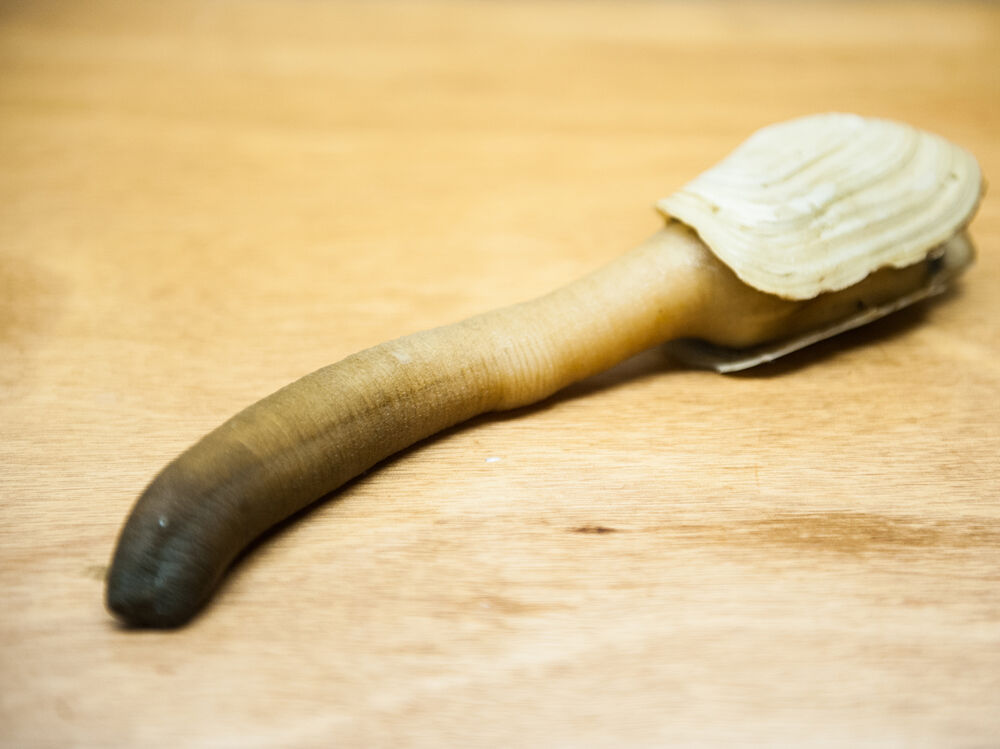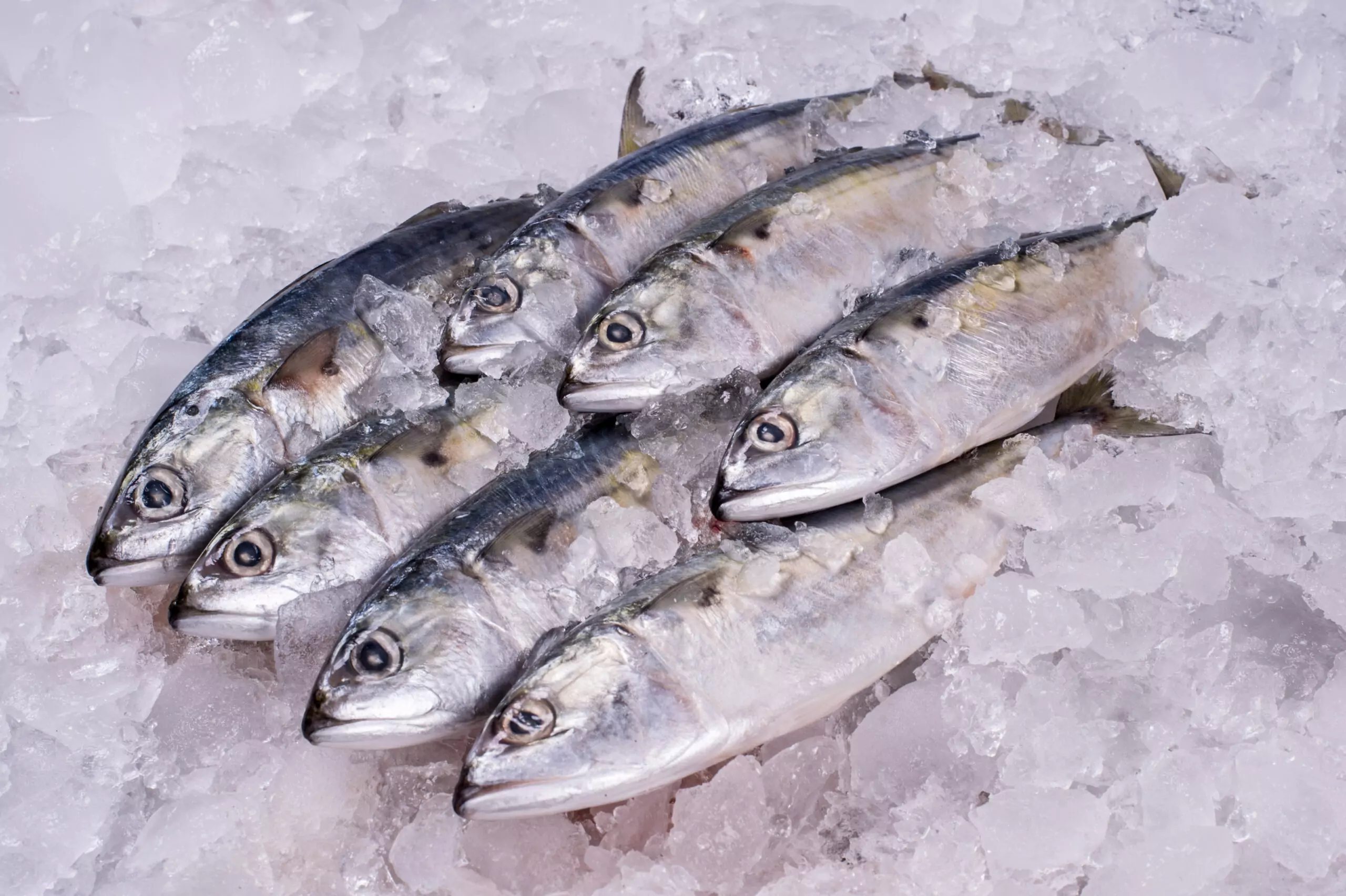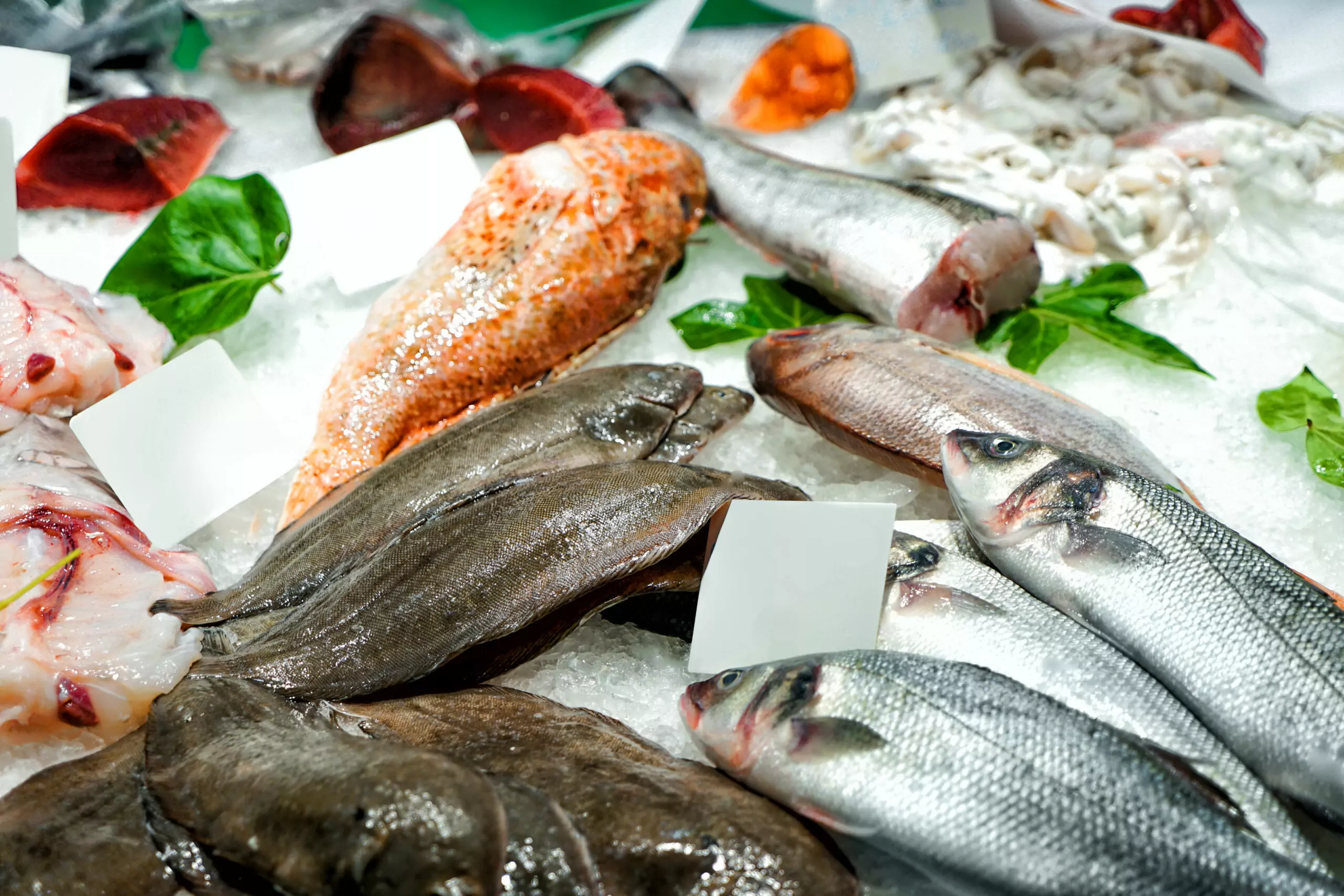The geoduck (pronounced gooey-duck) is a perfect example of the extremes that come with commercial fisheries. On one end of the spectrum, they are a thriving catch, providing an ecologically-friendly and sustainable way to create a booming fishing economy in areas that need it. At the other extreme, the industry is often subject to forces outside its control- a current example being a trade decision in China that could have more to do with international politics than with health or fishing. Looking at the recent history of the geoduck market is a excellent way to learn the ins-and-outs of the fishing industry.
Possessing a briny yet sweet taste with a slightly crunchy texture, the geoduck is a true delicacy. This giant clam can be served raw as mirugai, smoked or sautéed, or delicately shaved and served with ponzu – the opportunities are exquisite and endless. The meat of the elongated siphon is considered an aphrodisiac in many regions. This mollusk is strange, exotic, and deeply flavorful, and could be coming to a restaurant or seafood aisle near you. The geoduck has gained a prestigious reputation in Asian markets and is winning popularity in the American palate.
The wild fishery for geoducks can be found along the Pacific coast of Washington and British Columbia and draws in millions of dollars every year, employing thousands of people. The fishery is extremely well managed with minimal impact on the environment, making it one of the best choices to put on our delicious and sustainable seafood list. Unfortunately, in just the last month the geoduck industry has been all but completely shut down to a strict shellfish ban imposed by China, the main buyer of the jumbo sized clam.
A bivalve of extremes
The Pacific geoduck (Panopea abrupta) is an astounding organism. They are native to the Pacific Northwest, found from Alaska to Baja California. The largest burrowing clam in the world, the geoduck has been known to weigh in at 7 pounds and reach lengths of over 3 feet. They are one of the longest-living animals, with the oldest recorded specimen a whopping 168 years old. Females can produce up to 5 billion eggs in a century-long lifespan – compared to a human female who produces a paltry 500 ova during her life.

Image courtesy of Marine Wiki.
Geoducks spend their long lives buried in sand and mud, extending their famed siphon upwards to reach towards the salty brine of the ocean to feed. They have few predators in the adult life stage, though their protruding siphons are “grazed” upon by seastars, dogfish, halibut and cabezon. They are are most likely so long-lived because of this absence of predators and because their sedentary lifestyle invites very little wear-and-tear.
Wild-caught and well-managed
The two primary wild-caught fisheries are in Washington and British Columbia and both have been well-managed for decades. Wild harvest began in the 1970s as an open access fishery, meaning anyone could get a permit. In 1979, the total catch was restricted, as were the number of licenses issued each year. Landings rose steadily over the next decade until scientific assessments of the wild populations recommended that quotas be lowered. It is the most valuable invertebrate fishery on the west coast of Canada and pulls in $270 million per year in Washington.
Much of the success of the fishery can be attributed to the switch in 1989 to an I.V.Q (individual vessel quota). Under this system, each fishing vessel is given an equal share of the annual allowable catch. This eliminates the competition among fishermen that occurs with so many other fisheries, where they compete to harvest the most catch faster than anyone else. By working closely with buyers and timing harvest to the most favorable market conditions, fishermen get the max value for their catch. The geoducks are often shipped alive, which fetches a higher price per pound.
Geoduck clams are harvested with hand-held water jets known as stingers, which cause minimal damage to the surrounding environment. Both Washington and British Columbia have vigorous assessments of the local population and the commercial fishery is allowed to only take a small percentage of the estimated wild population. There is strict monitoring of the catch and penalty enforcement if the regulations are breached. Management measures are in place to rebound stocks from previous overfishing. The combination of these criteria lead to a highly effective management strategy of the wild geoduck fishery.
A controversial import ban
The geoduck fishery in the Pacific Northwest relies heavily on China’s market, as 90% of the harvest in Washington is exported to Hong Kong. Less than a month ago, China imposed a ban on the import of geoduck and other bivalves over concerns of contamination. Testing of two shipments of clams found trace amounts of arsenic and a natural marine toxin that causes paralytic shellfish poisoning (PSP). These shipments were reportedly from Ketchikan, Alaska and SeaTac, Washington.
Washington Department of Health officials are puzzled by China’s claims, saying that the geoduck from these areas were in good standing with low levels of PSP. Their records do not show the same unsafe toxin levels that were reported by China’s officials. U.S. seafood inspectors have asked China for details about their testing methods, but haven’t yet received them. Parts of the geoduck that are not eaten, like the gut, would store most of the toxin and if tested would show harmful levels. There are no reports of anyone becoming ill because of the shipments.
Each year Washington state harvesters collect about 5 million pounds of wild geoduck. Half of the fishing permits issued are held by Native American tribes and the other half by commercial harvesters. The Suquamish tribe in Puget Sound has been hit particularly hard by the ban, losing an estimated $20,000 a day while the ban is in place. It couldn’t have come at a worse time – parents had no money to buy their children Christmas gifts or put more than a meager meal on the table.
Human health comes first and foremost when it comes to concerns over contaminated food. But it is also extremely important for an effective level of communication to take place between two nations that rely on each other economically in a valuable market like the geoduck. When details are not provided or information is withheld, it causes widespread confusion and accusations of political strife, manipulation and trade strategy have increased with no end in sight for the ban.
A hopeful future
Even well-managed, sustainable fisheries can encounter discord when met with unforeseen circumstances. But the geoduck fishery is resilient and hopefully the most recent controversy will be quickly resolved. There is no doubt that this delicious giant clam will make its way back to the international market soon.


